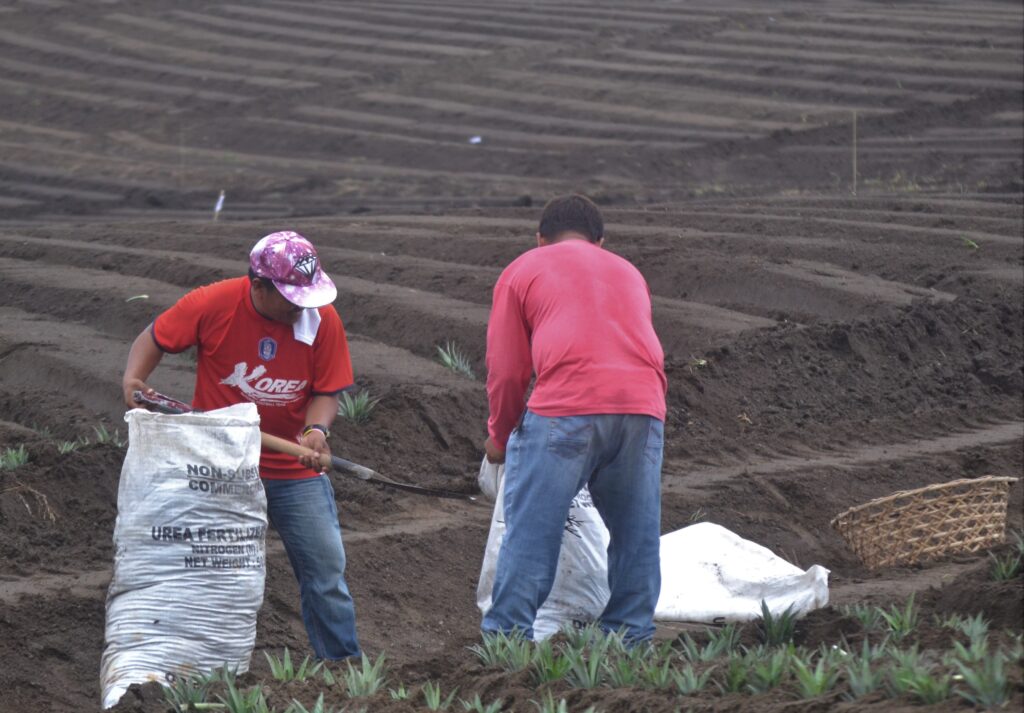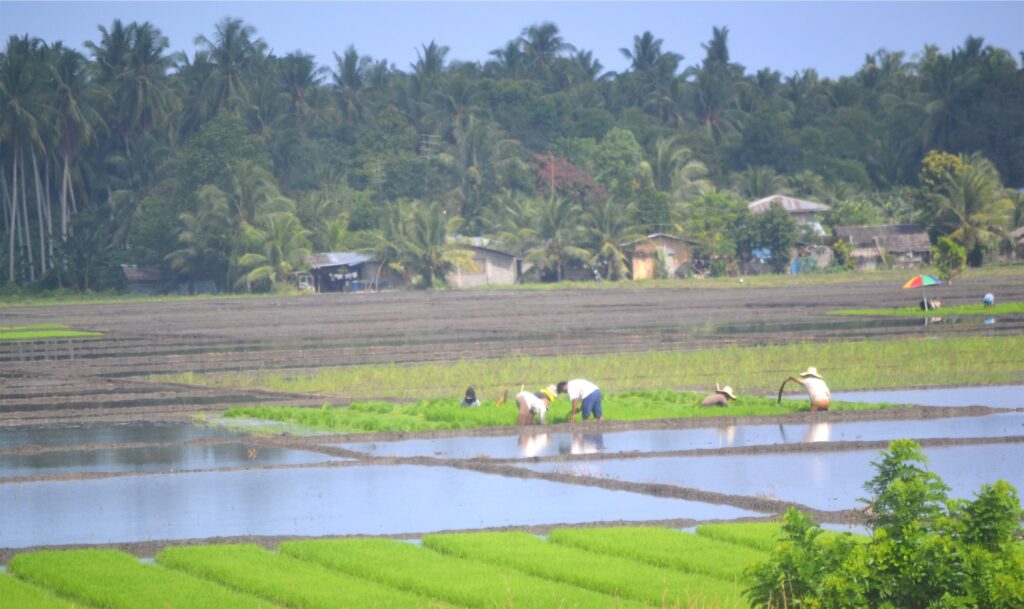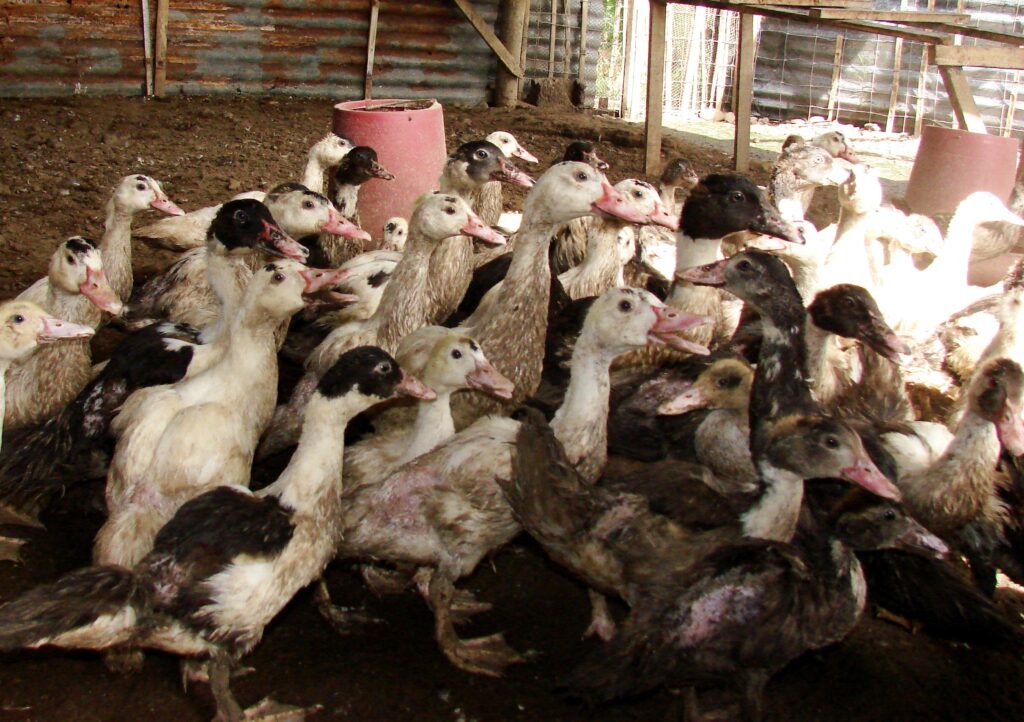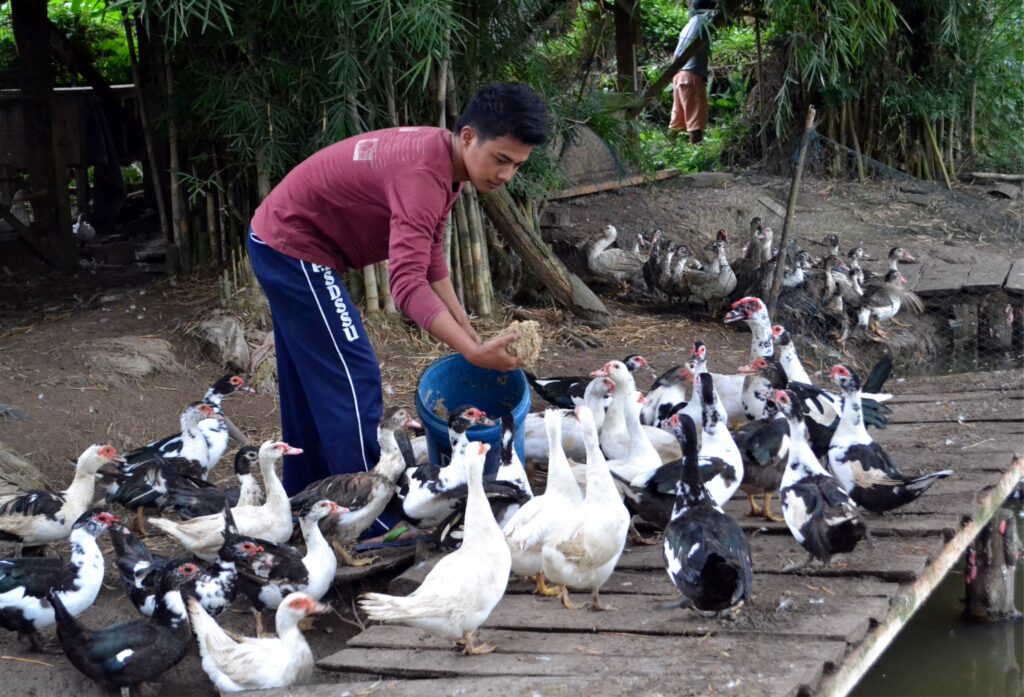Text and Photos by Henrylito D. Tacio
The earth’s temperature is controlled by many factors, including the greenhouse effect, which works something like a glass greenhouse. When radiant energy from the sun reaches the earth’s atmosphere, it passes through the greenhouse gases, heating the earth’s surface.
The heat (called infrared radiation) is then reradiated (released) from the earth back up into the atmosphere. The greenhouse gases, however, absorb infrared radiation, trapping it and heating up the lower portion of the atmosphere.
“As long as the amount of greenhouse gases remains constant, along with other climatic factors, the temperature on the planet remains relatively steady,” writes Steven Dashefsky, author of Environmental Literacy: Everything You Need to Know about Saving Our Planet. “Increased amounts of greenhouse gases due to human activities increase the greenhouse effect and are believed to lead to global warming.”
Greenhouse gases include carbon dioxide from burning fossil fuels, chlorofluorocarbons from air conditioners and refrigerators, methane gas from landfills and feedlots, and the nitrogen compound nitrous oxide from burning fossil fuels and fertilizers. Ground-level ozone, produced by burning fossil fuels, is also considered a greenhouse gas.
Carbon dioxide has been cited as the primary culprit of global warming. Most raging debates are based on this gas. But what most experts fail to notice is the contribution of methane to climate change. In fact, about 12 percent of global warming is attributed to increases in methane in the atmosphere.
The journal Science reported that the atmospheric concentration of methane has more than doubled during the last 300 years and is increasing at an annual rate of about one percent each year.
Methane gas is created naturally as a waste product of anaerobic bacteria (living with little or no oxygen). These bacteria produce methane gas in waterlogged soils and wetlands, but also in human-produced environments such as rice paddies and landfills.
The digestive system of ruminant animals such as cattle, goats, and sheep also contains these bacteria and produces methane gas. A single cow belches out 100 gallons of methane gas a day. The microbes in the guts of termites, which digest wood, also produce methane.
The top ten sources of methane in the atmosphere are wetland (20.2 percent), rice fields (19.4 percent), ruminants or cud-chewing animals like cattle (14 percent), biomass fires, such as burning forests (9.7 percent), oil and natural gas pipeline leaks (7.9 percent), termites (7 percent), coal mining (6.2 percent), landfill (6.2 percent), animal wastes (5 percent), and sewage (4.4 percent).
The concentration of methane in the atmosphere has more than doubled during the past 200 years, scientists claim. Rice fields have been cited as one of the significant contributors to methane in the atmosphere.
“Rice is a plant that grows best in wet soil, with its roots flooded,” says L. Hartwell Allen, an American soil scientist at the Crops Genetics and Environmental Research Unit in Gainesville, Florida. “But flooded rice crops emit substantial amounts of methane to the atmosphere.”
Science-based strategies
Scientists explain that long-term flooding of the fields cuts the soil off from atmospheric oxygen and causes anaerobic fermentation of organic matter in the soil. During the wet season, rice cannot hold the carbon in anaerobic conditions. The microbes in the soil convert the carbon into methane, which is then released through the respiration of the rice plant or through the diffusion of water.
On the other hand, the decomposition of organic material in flooded rice fields produces methane, which then escapes to the atmosphere during the growing season. “Traditionally, farmers flood their rice fields continuously and incorporate 4-5 tons of rice straw per hectare at land preparation,” says a report released by the Philippine Council for Agriculture, Aquatic and Natural Resources Research and Development (PCARRD). “Every year, these practices release 5,883 tons of methane to the atmosphere.”
In Isabela State University, a study funded by PCARRD showed that by using simple science-based strategies, farmers could contribute significantly to the reduction of methane emissions. For instance, mid-season drainage of irrigation water reduced methane emissions by 48 percent. This emission is valued at P34.16 million, based on the 2009 World Bank price of US$12 per ton of carbon dioxide and an exchange rate of P48 per US$1.
Meanwhile, composting of rice straw resulted in 64 percent less methane emission released in the air. By combining mid-season drainage and application of rice straw compost, methane emission is further reduced by 81 percent.
“By shifting to climate-change friendly farming practices, as what was done in the 7,789.34 hectares of lowland irrigated rice in Isabela, farmers can get incremental benefits amounting to as high as P138.95 million per year,” the PCARRD report points out.
Alternate wetting and drying
Rice farmers can also help reduce methane emissions into the atmosphere by adopting controlled irrigation or alternate wetting and drying (AWD) technology.
Developed by the Laguna-based International Rice Research Institute (IRRI), AWD is a technology that allowed rice fields to dry for a certain period before applying irrigation water.
Also called controlled irrigation or intermittent irrigation, AWD technology can actually save farmers almost one-third of irrigation water without sacrificing yields. It also saves farm inputs like oil, fuel, and labor being utilized on the operation of water pumps.
On an 8-season field experiment conducted at IRRI, it was found that AWD “has real potential to reduce the global warming impact of paddy fields to one-third of the conventional continuously-flooded field water management.”
In a paper presented during the international workshop on “Water Management and Technology for Crop Production under Climate Change” in Suwon, Korea, the authors claimed AWD “can reduce methane emissions by over 40%.”
Rice fields using this technology are alternately flooded and dried. The number of days of non-flooded soil can vary from one day to more than ten days, according to IRRI. It uses an “observation well” that is made of bamboo, plastic pipes, or any hollow indigenous material. Perforations are made in the lower half of the tube.

Farming hilly land 
Planting rice
The AWD technology can be started a few days after transplanting (or with a 10-centimeter tall crop in direct seeding). When many weeds are present, AWD can be postponed for 2-3 weeks until weeds have been suppressed by the ponded water. Local fertilizer recommendations as for flooded rice can be used. Nitrogen fertilizer may be applied preferably on the dry soil just before irrigation.
“A practical way to implement AWD technology is by monitoring the depth of the water table in the field using a simple perforated field water tube,” IRRI explains. “When the water level is 15 centimeters below the surface of the soil, it is time to flood the soil to a depth of around 5 centimeters at the time of flowering, from one week before to one week after the maximum flowering.”
The water in the rice field is kept at 5 centimeters depth to avoid any water stress that would result in severe loss in rice grain yield. The threshold of water level at 15centimeters is called “safe AWD,” as this will not cause any yield decline because the roots of the rice plants are still able to take up water from the saturated soil and move it to the root zone.
“The field water tube used in this technology will help to measure the water level in the field so that incipient water stress in the rice plants can be anticipated,” the IRRI points out. As such, the AWD technology does not only save water but can significantly reduce emissions of methane.
Rice-duck scheme
In Zamboanga del Sur, farmers release ducks after rice harvesting. Nonoy E. Lacson, in a report, wrote: “Under the system, ducklings are released to rice fields to graze and feed. The paddling movement of the ducks in the rice fields increases the rice tillers, in effect raising annual yield by as much as 10 to 15 percent. Besides their paddling, ducks also eat the insects and unwanted weeds in the rice field.”
According to the agriculture department, the integrated rice-duck farming system is one of the best strategies in increasing rice productivity. It reduces labor and inputs characterized by its devoid use of artificial fertilizers and chemicals. Thus, the shift from the conventional way of planting using inorganic materials to this technology provides an additional source of income and food to farmers.

Ducks 
Duck raising
The said technology is environmentally sound as it restores the relationship of people with nature. This is a sustainable system as it helps in eliminating the contamination of soil, water, and air brought by chemical substances that are harmful to both nature and humans.
“The integrated rice-duck technology reduces the use of chemicals,” the agriculture department points out. “Since ducks are grown alongside rice paddies, they eat harmful pests at the same time their dung fertilizes the soil. Their paddling movement cultivates the soil and destroys the weeds. Its benefits to the farmers are immediately felt and tangible.”
Conclusion
Dr. Drew Shindell, a climatologist at NASA’s Goddard Institute for Space Studies, Columbia University in New York, once said: “If we control methane, which is viable, then we are likely to soften global warming more than one would have thought, so that’s a very positive outcome.”

